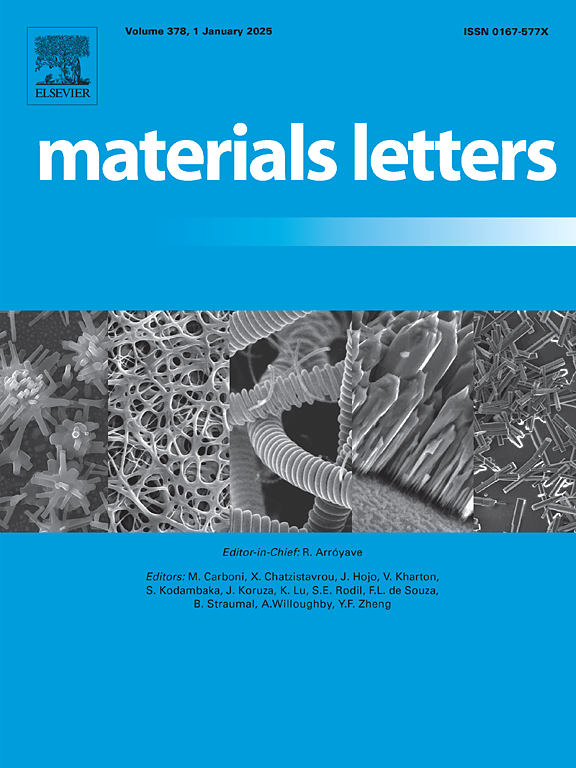waam制造ER70S-6钢构件表面粗糙度优化
IF 2.7
4区 材料科学
Q3 MATERIALS SCIENCE, MULTIDISCIPLINARY
引用次数: 0
摘要
为提高ER70S-6实心线材WAAM的表面质量,提出了一种经济、实用的工艺优化策略。采用田口L9正交阵列,系统研究了行程速度、电流和电压三个工艺参数对沉积壁面粗糙度的影响。利用红外热像仪监测通道间温度,以评估热积累。结果表明,在20 cm/min的速度、130 a的电流和19 V的电压条件下,再加上250°C的稳定通间温度,可以显著减少热积累,增强表面形貌,产生最小Sa为187 μm。通过几何结构的制作进一步验证了优化后的参数。研究结果证实了通道间停留时间有助于改善局部表面平整度,并验证了所选参数的稳定性和可行性。本研究不仅为低合金WAAM部件的表面改善提供了一条可行的途径,而且为WAAM工艺的表面质量控制和热管理策略提供了有益的参考。本文章由计算机程序翻译,如有差异,请以英文原文为准。
Optimization of surface roughness in WAAM-fabricated ER70S-6 steel components
This study proposes a cost-effective and practically applicable process optimization strategy for improving surface quality in WAAM using ER70S-6 solid wire. A Taguchi L9 orthogonal array was employed to systematically investigate the effects of three process parameters, travel speed, current, and voltage on the areal surface roughness of deposited walls. Interpass temperatures were monitored using an infrared thermal camera to evaluate thermal accumulation. The results revealed that a parameter combination of 20 cm/min travel speed, 130 A current, and 19 V voltage, coupled with a stabilized interpass temperature of approximately 250 °C, significantly reduced thermal buildup and enhanced surface morphology, yielding a minimum Sa of 187 μm. The optimized parameters were further validated through the fabrication of a geometric structure. The findings confirmed that interpass dwell time contributes to improved local surface flatness and verified the stability and feasibility of the selected parameters. This work not only demonstrates a practical pathway to surface improvement in low-alloy WAAM components but also provides a useful reference for surface quality control and thermal management strategies in WAAM processes.
求助全文
通过发布文献求助,成功后即可免费获取论文全文。
去求助
来源期刊

Materials Letters
工程技术-材料科学:综合
CiteScore
5.60
自引率
3.30%
发文量
1948
审稿时长
50 days
期刊介绍:
Materials Letters has an open access mirror journal Materials Letters: X, sharing the same aims and scope, editorial team, submission system and rigorous peer review.
Materials Letters is dedicated to publishing novel, cutting edge reports of broad interest to the materials community. The journal provides a forum for materials scientists and engineers, physicists, and chemists to rapidly communicate on the most important topics in the field of materials.
Contributions include, but are not limited to, a variety of topics such as:
• Materials - Metals and alloys, amorphous solids, ceramics, composites, polymers, semiconductors
• Applications - Structural, opto-electronic, magnetic, medical, MEMS, sensors, smart
• Characterization - Analytical, microscopy, scanning probes, nanoscopic, optical, electrical, magnetic, acoustic, spectroscopic, diffraction
• Novel Materials - Micro and nanostructures (nanowires, nanotubes, nanoparticles), nanocomposites, thin films, superlattices, quantum dots.
• Processing - Crystal growth, thin film processing, sol-gel processing, mechanical processing, assembly, nanocrystalline processing.
• Properties - Mechanical, magnetic, optical, electrical, ferroelectric, thermal, interfacial, transport, thermodynamic
• Synthesis - Quenching, solid state, solidification, solution synthesis, vapor deposition, high pressure, explosive
 求助内容:
求助内容: 应助结果提醒方式:
应助结果提醒方式:


